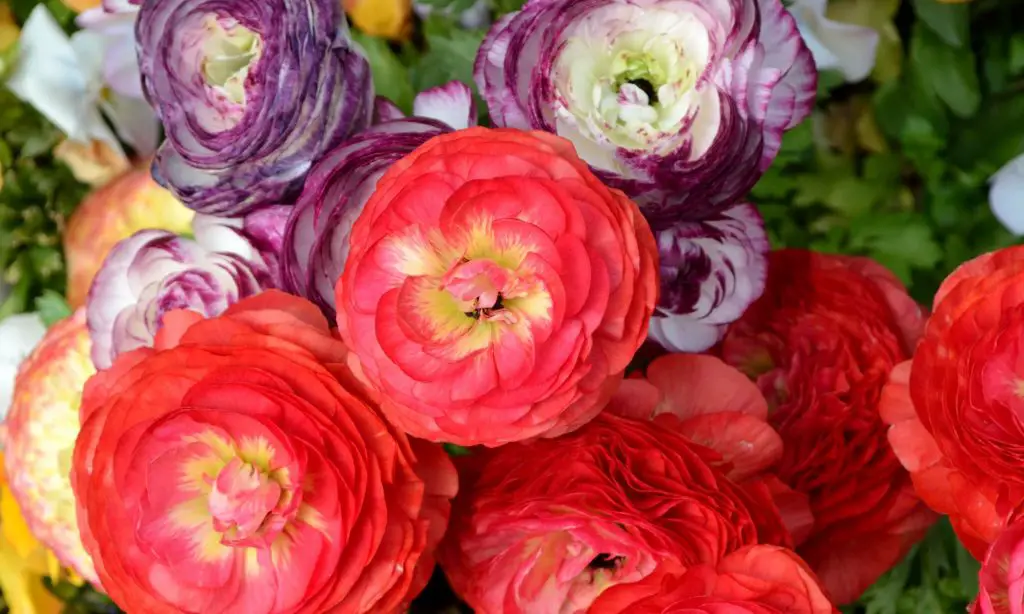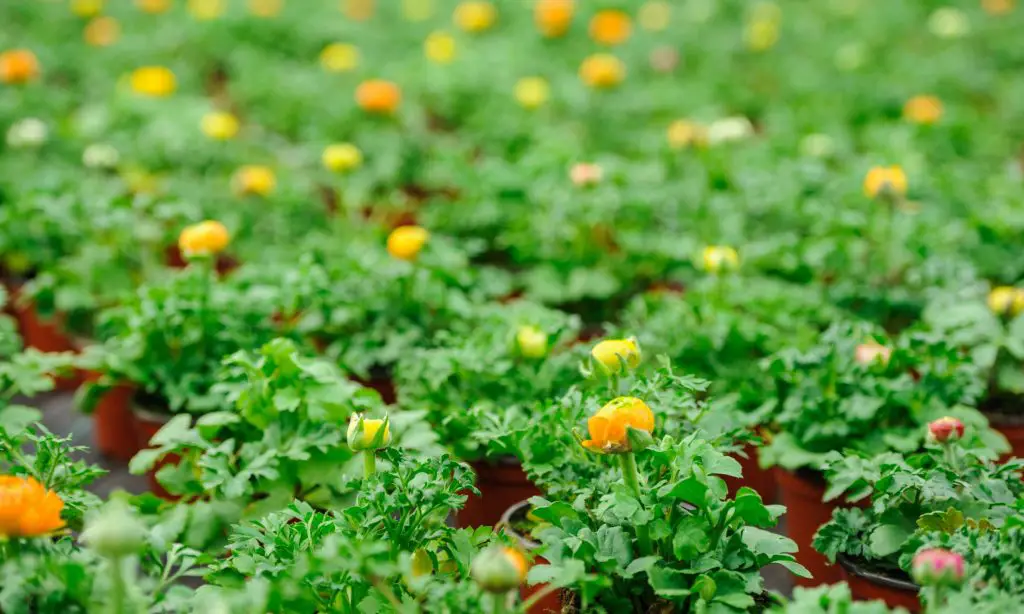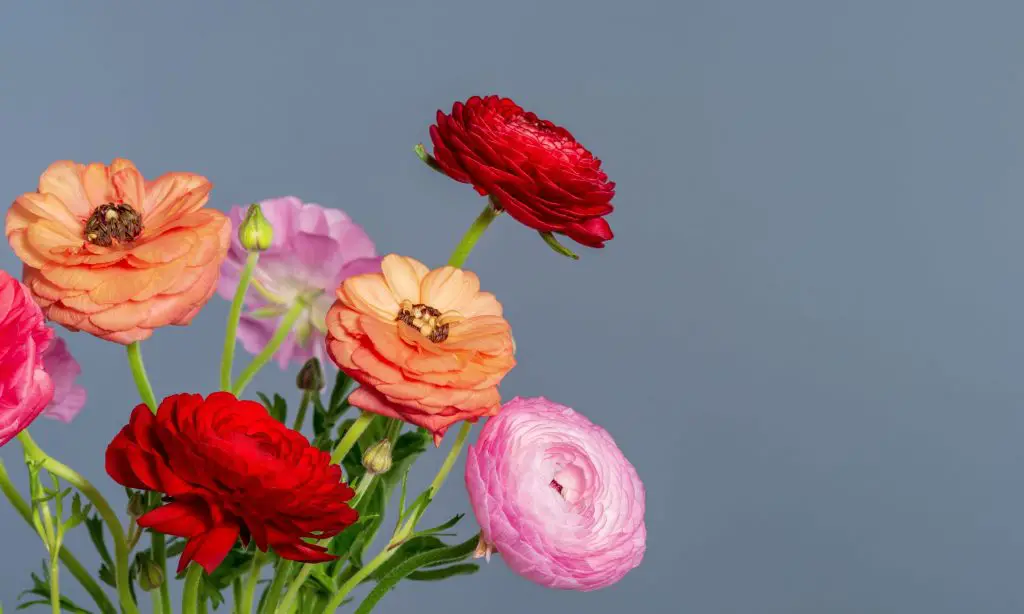Planting Ranunculus | Where, When, How
If you are looking for a beautiful flower to add to your outdoor garden, look no further than ranunculus. These flowers have a unique petal shape and come in a variety of colors, making them perfect for any landscaping scheme. Best of all, they are easy to grow and can be planted either in the ground or in containers. Keep reading to learn more about how to plant ranunculus and get started on your very own garden!
Ranunculus corms are a type of tuber that produces beautiful, cup-shaped flowers in a variety of colors. They are relatively easy to grow, and corms can be planted either in the spring or fall. When planting ranunculus corms, it is important to choose a location that receives full sun and has well-drained soil. The corms should be planted about four inches deep and six inches apart. Once they are in the ground, ranunculus corms need very little care. They should be watered regularly, and the soil should be kept moist but not wet. If the leaves begin to yellow, this is an indication that the plants are not getting enough water. Ranunculus corms will bloom in late spring or early summer, and the flowers will last for several weeks. Once the blooms start to fade, the plants can be cut back to encourage new growth. With a little care, ranunculus corms will provide seasons of beautiful blooms.
Ready to learn more? Keep reading to learn how to pre-sprout corms, how to get the stems and MORE!!
Disclosure: Some of the links below are affiliate links, meaning, at no additional cost to you, I will earn a commission if you click through and make a purchase.
When To Plant Ranunculus
Ranunculus do best in regions with mild winters and long, cool springs. Fall is the ideal planting time in such areas. Those with colder winters can plant in late winter–early spring, once the threat of hard frosts is over. Ranunculus can grow well in zones 3–10 but you must overwinter in zones 3-7.

How to Plant Ranunculus
When you are ready to plant ranunculus, you should soak them in room temperature water for 3-4 hours. Keeping water running on them will allow more oxygen to the corm.
Now this is the fun part, as they soak, they will double in size looking like a little octopus! This gives them a little head start to growing those beautiful blooms. And if you want even more of a head start you can pre-sprout the soaked corms.
Fill a tray with moist soil like a seed starting tray. Cover the corms with the moist soil and place under a grow light in a cool place (around 50º F) like a basement. Check them every few days and after 10 days you should have sprouted ranunculus and you are ready to plant in your beds if there is no threat to frost.
Ranunculus in Warm Climates: In zones 7-11, they are planted in the ground in fall for late winter or early spring bloom.
Ranunculus in Cold Climates: In growing zones 3-6 or so, ranunculus need to spend the winter as dry little corms (as they arrive to you in the mail) in a cool, dry spot in your house, like the spot where you store your seeds; not in the fridge or next to the furnace. Then in late winter, about 3 months before you want them to bloom and 3 weeks before you can plant them out in the garden soak them as mentioned above.
Once they have leaves and you are ready to plant them outdoors, harden the plants off outdoors for a few days before setting them out in the garden.
Plant out as soon as the snow melts off your garden, or as soon as nights are around 25-35 degrees F and days are in the 40’s and 50’s F. They like a teaspoonful of an organic granular fertilizer. Plant so the soil level is the same as in the plugs/seed flat.
Water thoroughly when you plant them; then water as needed to make sure the little roots don’t dry out completely. If it’s raining often, a soaking watering once a week should be plenty; don’t overwater.
They’re hardy to 23 degrees F when growing, but benefit from being covered with frost cloth if it’s in the low 20’s several nights in a row.

Growing Ranunculus in Raised Garden Beds
A sunny site with rich, well drained soil is ideal for growing ranunculus. If the ground is susceptible to puddles after hard rains, it’s advisable you enhance the drainage and raise the soil level by adding at least 2–3 inches of compost, peat moss or other organic material.
Ranunculus corms have pointed ends that look a lot like claws. Make sure these “claw-ends” are facing down as you plant them, 1–2 inches deep, 4–6 inches apart. Water well after planting and apply a 2–3 inches layer of mulch to help conserve moisture that’s paramount to the plants’ early growth. You’ll start to see floral growth within 90 days of planting.
Resist the urge to cut off the faded foliage after ranunculus flowers have finished blooming. The faded leaves are still pretty useful as they continue to gather sunlight and prepare for next season. The foliage usually dies back by the end of summer at which point you can completely remove it. The plants will remain inactive for the next few months and then start all over again.
Make sure you irrigate regularly during the growing period and stop once the plants have gone dormant.

Growing Ranunculus in Tubs or Containers
Pick a container that’s large enough to accommodate the full grown plant and has adequate drainage holes to prevent water logging. Fill in with quality well draining soil. Find your container a spot that receives full sun for at least 6 hours a day.
Dig 2” deep holes and plant the corms with the “claw-ends” pointing down. Space adjacent corms 4–6 inches apart. Water well to help the soil settle down around the corms. Keep an eye on the soil during the initial growing phase, irrigating regularly to keep it from drying out.
Ranunculus planted in fall start to bloom early in the spring season, flowering continuously for a period of 6–7 weeks. Corms planted in late winter begin to flower by mid-spring and usually remain in bloom for 4–6 weeks. Check how we planted our corms in late winter –Planting Ranunculus Corms in February – Zone 7.
Leave the spent foliage in place so it can gather sunlight and provide nourishment for next season’s growth. The foliage will die back on its own by summer end and can be removed completely.
Irrigate the plants regularly while they’re active. Once they’ve gone dormant, you can stop watering altogether.
Will Ranunculus Bloom All Summer?
No, the ranunculus blooms in the early spring and will continue to do so until the beginning of summer. At this point, the plant will go dormant. If you are growing the plant indoors, then it is possible to have it bloom in the summer, depending on the growing conditions and when you choose to plant them.

Can I Leave Ranunculus In The Ground?
Yes, once the flower has stopped blooming and the foliage has died back, simply trim the dead matter away. The tubers will store energy to bloom the following growing season.
If you live in zone 7 or lower you will need to overwinter your Ranunculus to ensure that they don’t freeze. Ranunculus corms will store perfectly in a cool, dry spot in your house. A mouse-free place in a dry corner of your basement away from the furnace, or the same cool, dry place where you keep your garden seeds, is great.
Do ranunculus grow back every year?
With proper care and over-wintering ranunculus will double and grow back each year.
Ranunculus are one of the most elegant and classic spring flowers. They have a delicate look, but don’t be fooled – these beauties are actually quite easy to grow! With just a little bit of knowledge, you can have ranunculus blooming in your own garden in no time. Be sure to check out our cut flower starter pack which has everything you need to get started growing beautiful cut flowers.
You may also enjoy these related articles:
- How to Start a Cut Flower Garden
- Planting Ranunculus Corms in February – Zone 7
- 5 Tips for Growing Ranunculus
- The BEST Places to Buy Cut Flower Garden Seeds
Did you enjoy this article? Want to hear more? Stay in touch! Sign up below to receive weekly tips and inspiration for your homestead.
[convertkit form=3733554]

